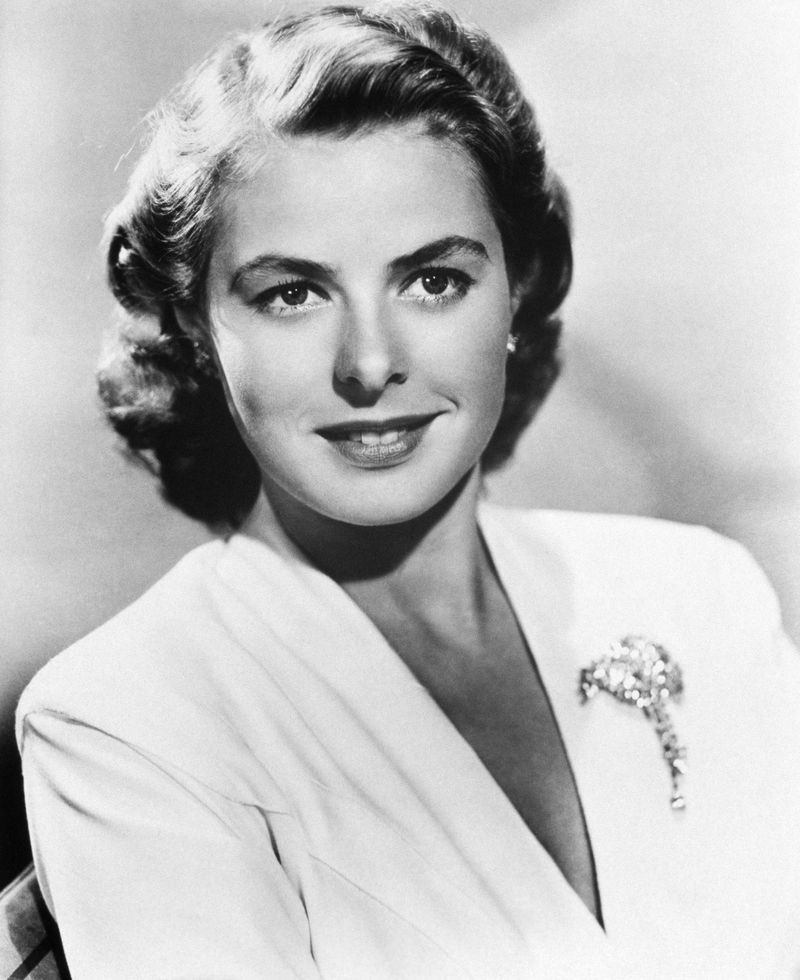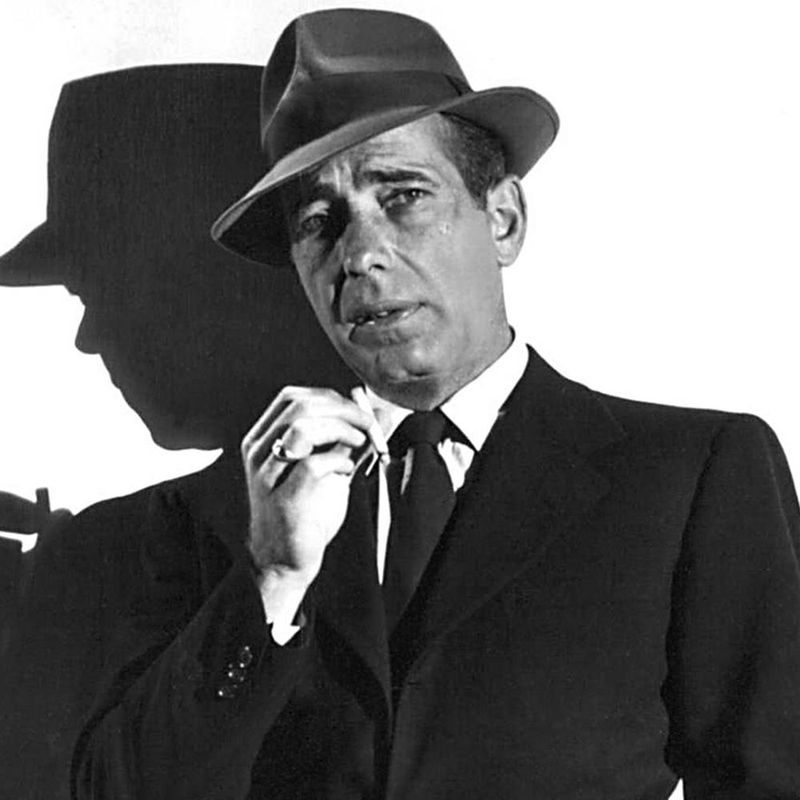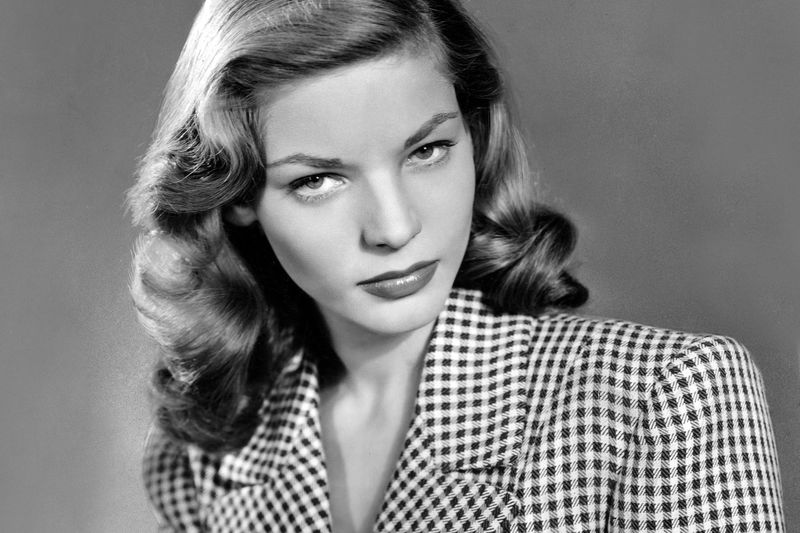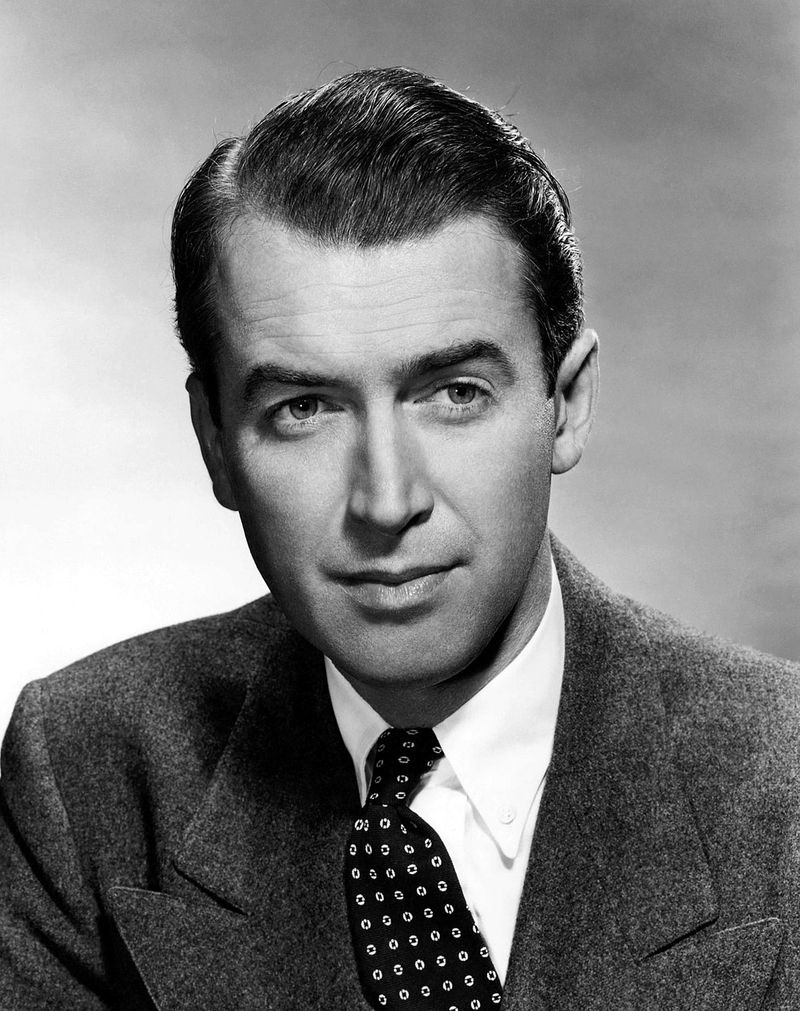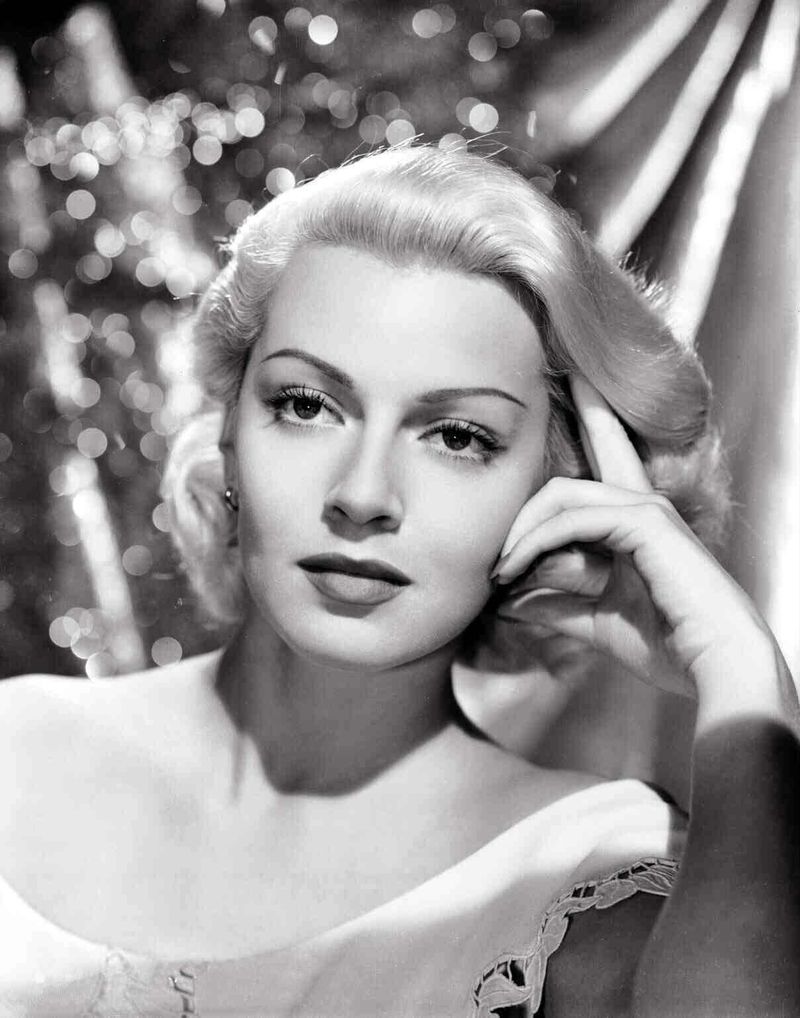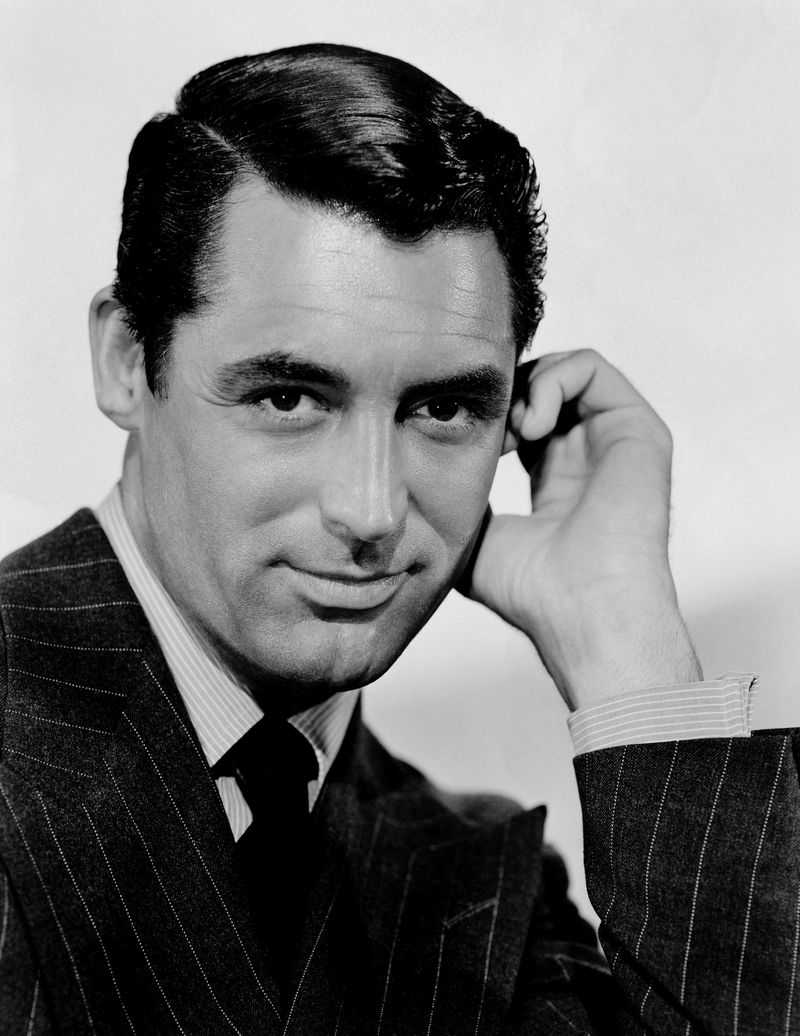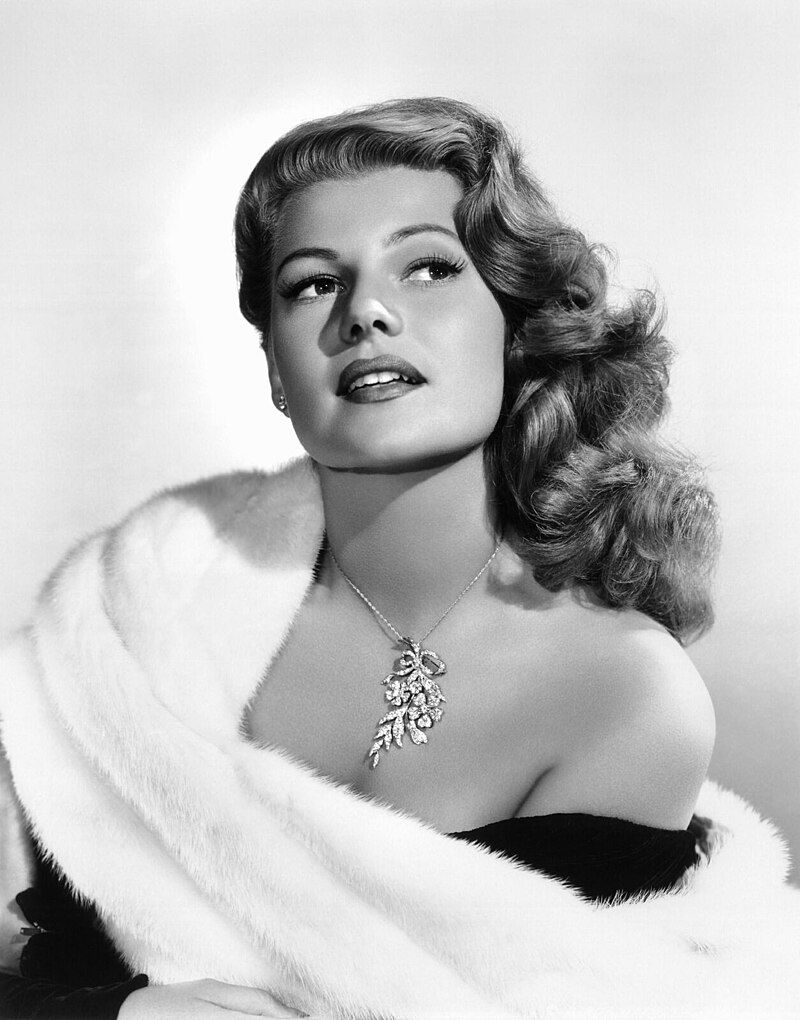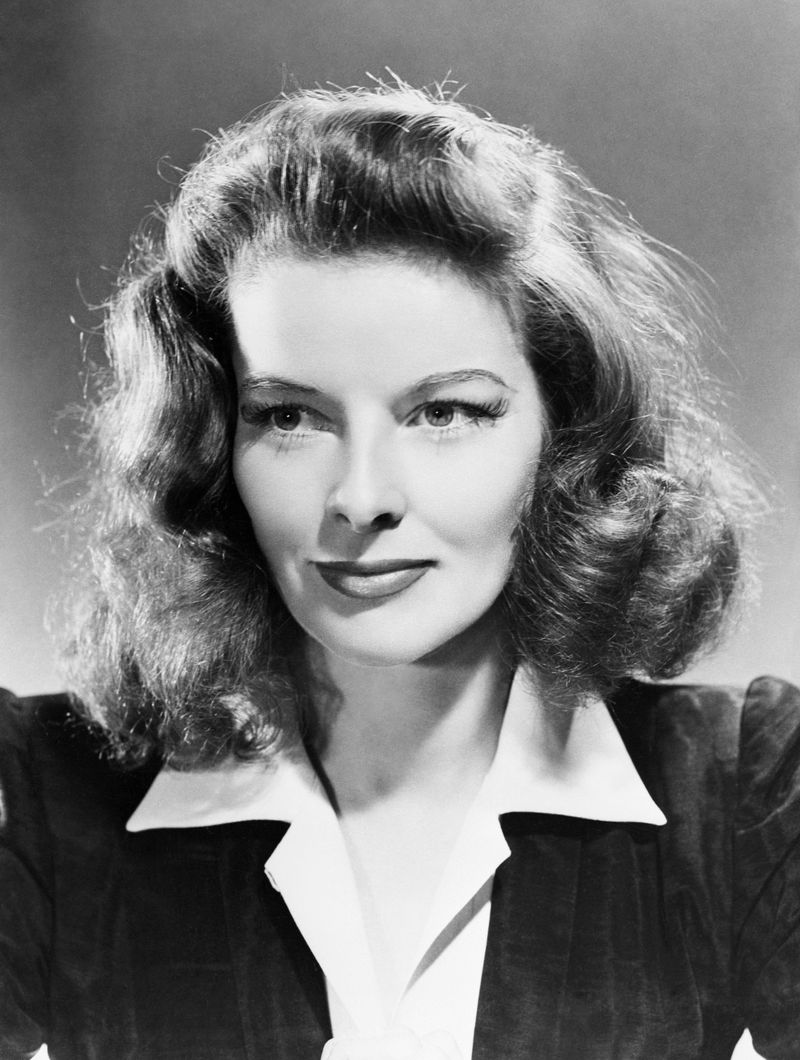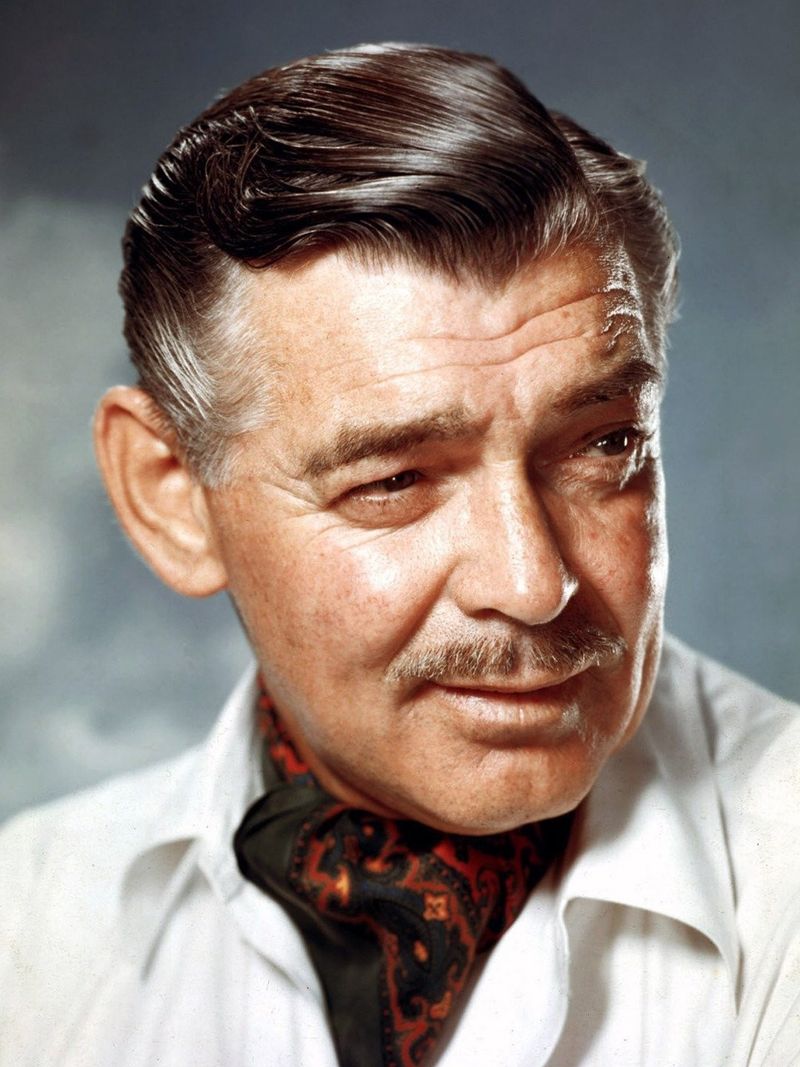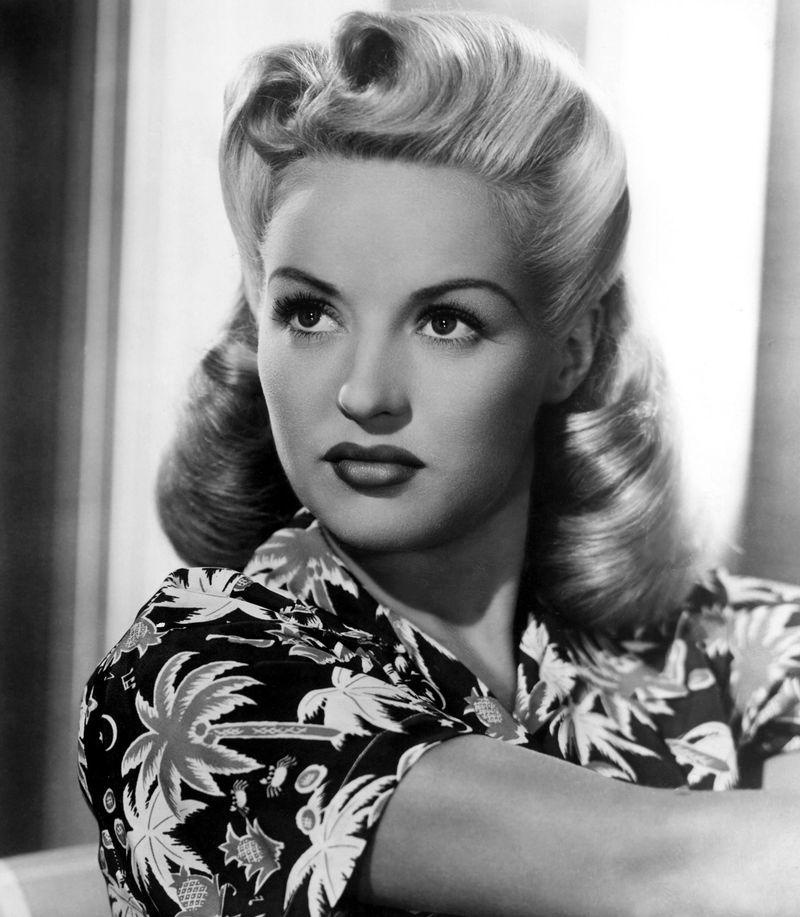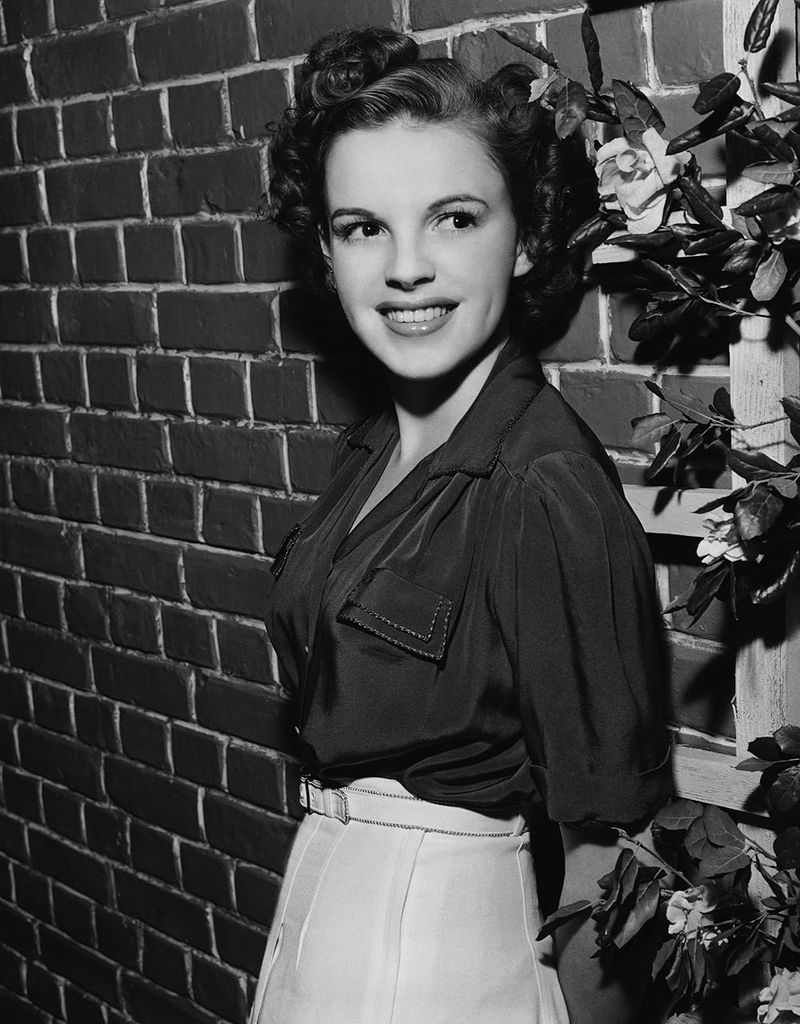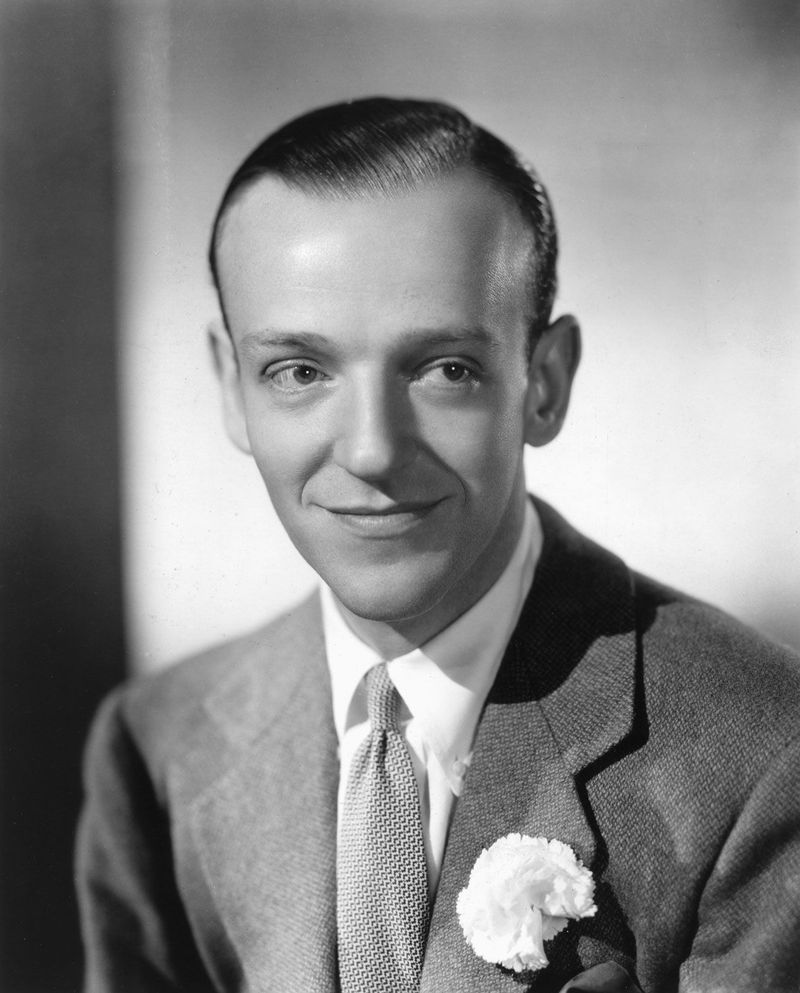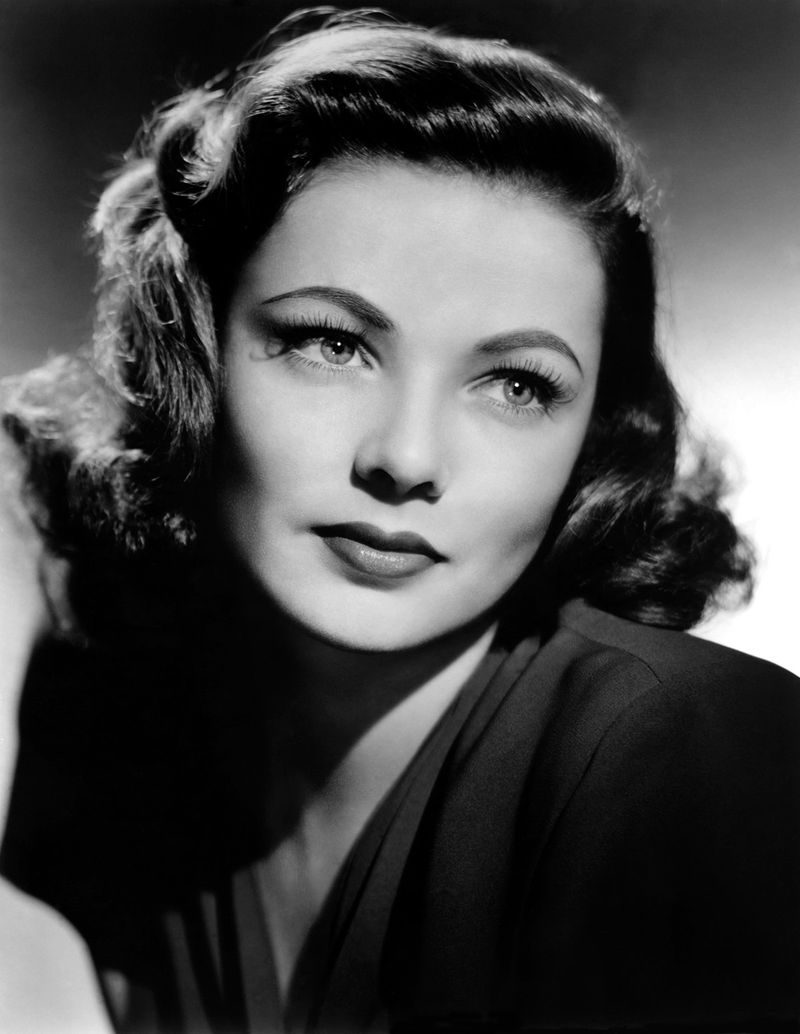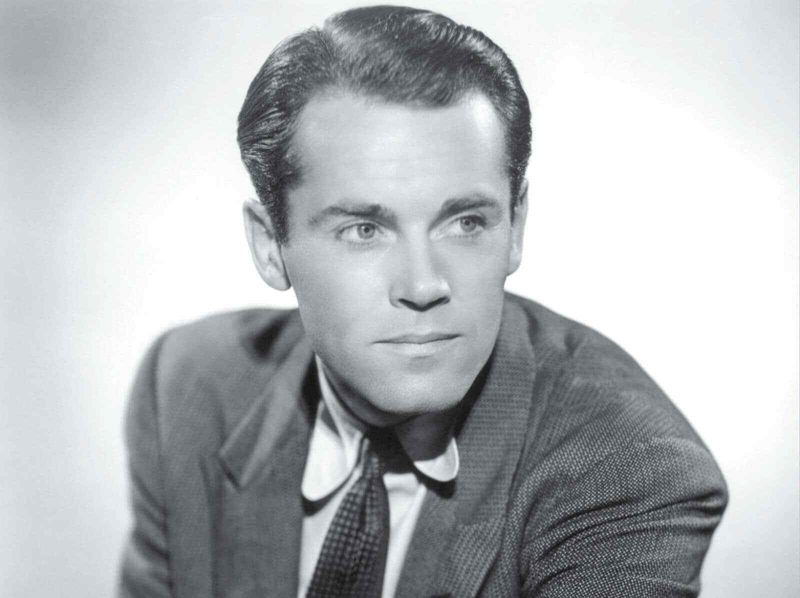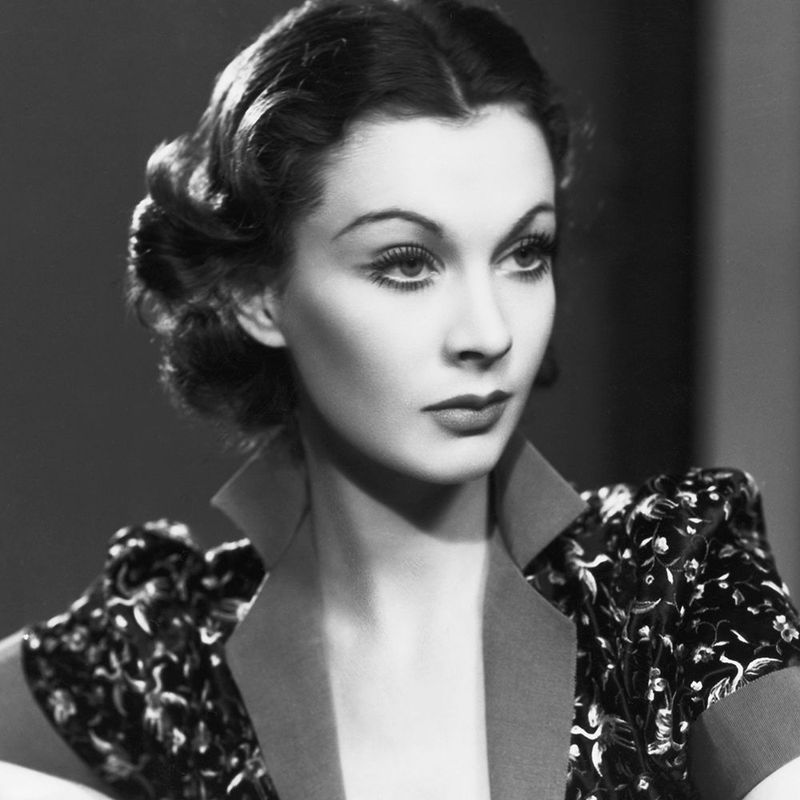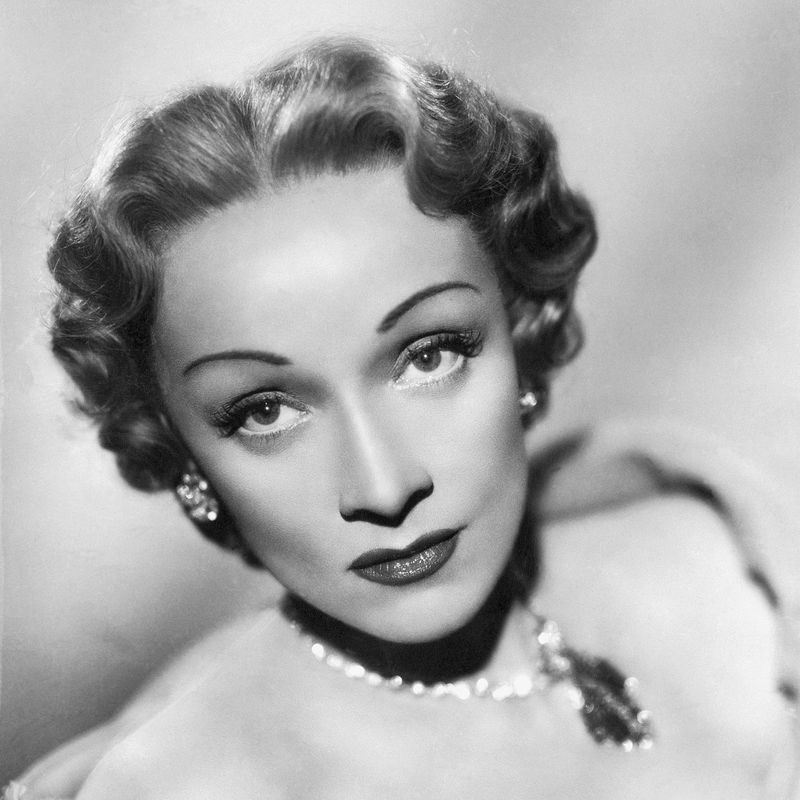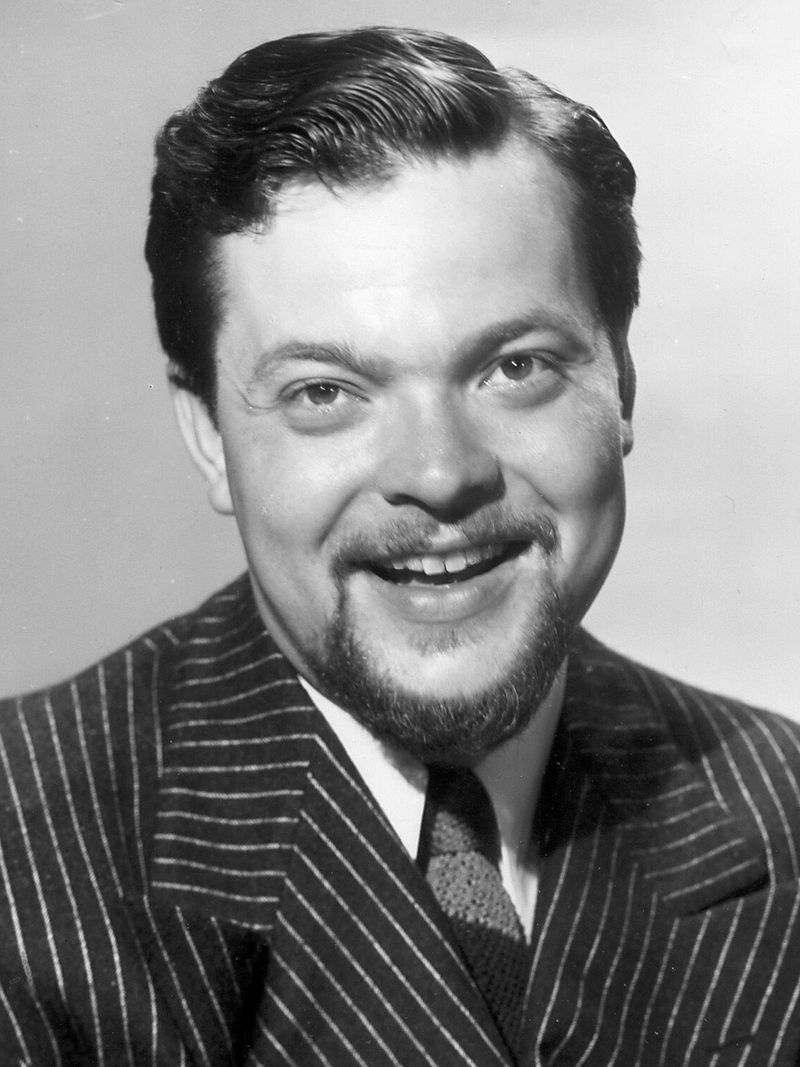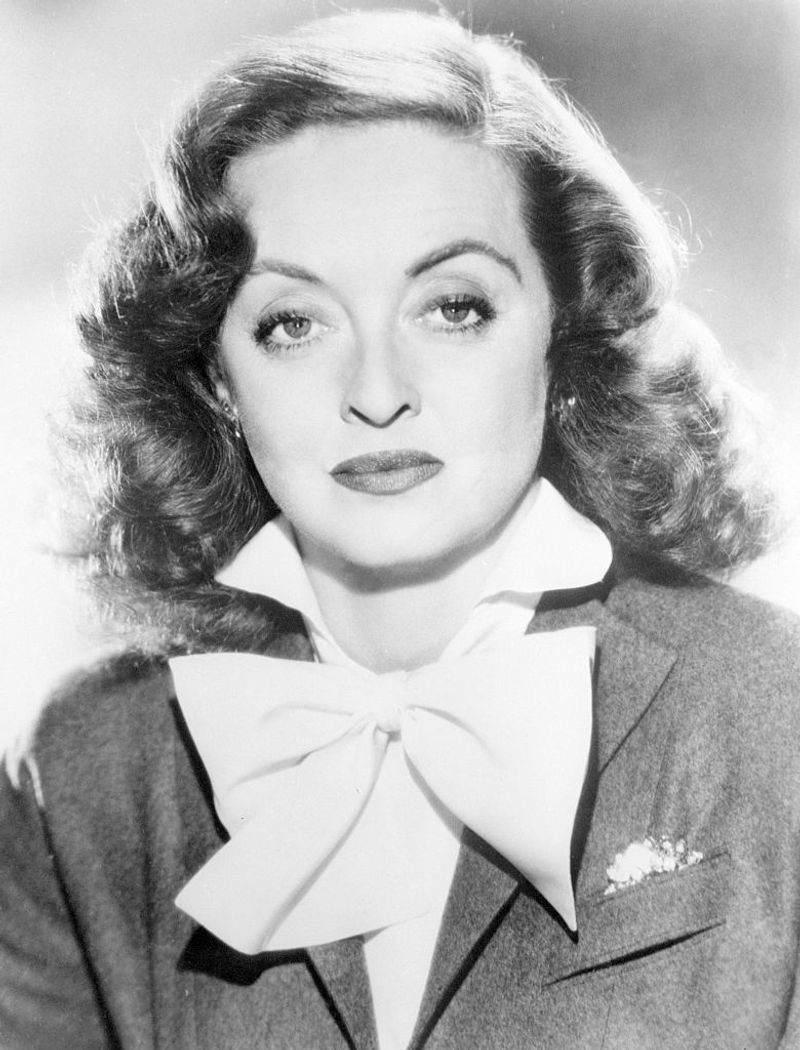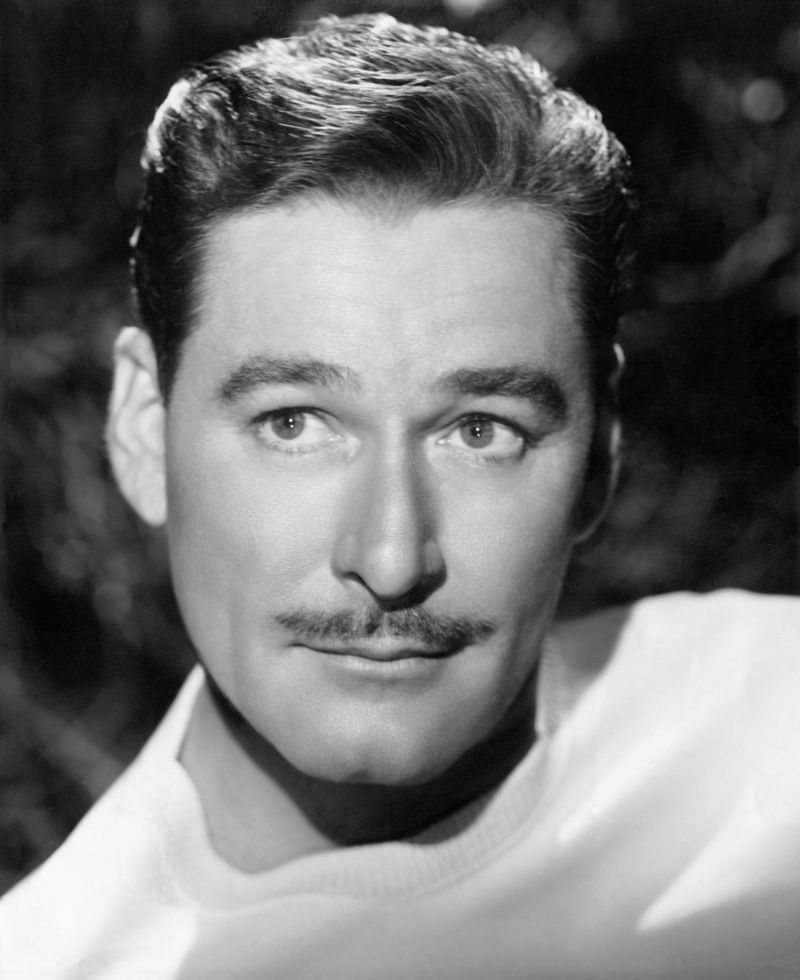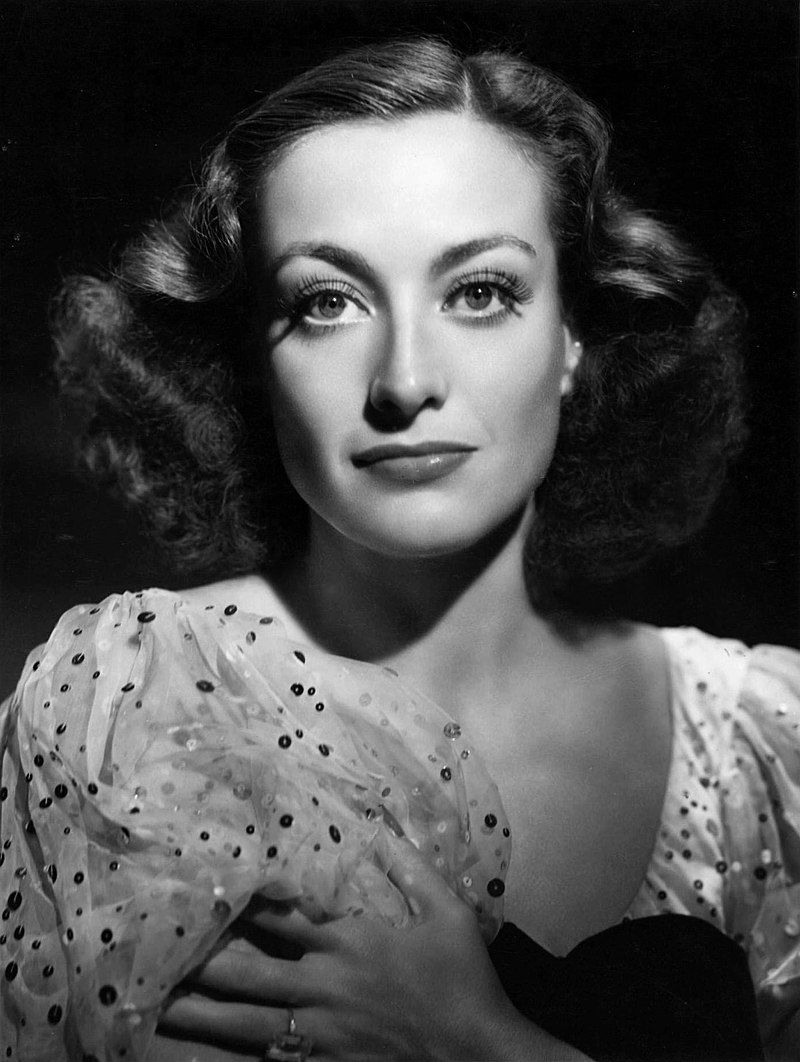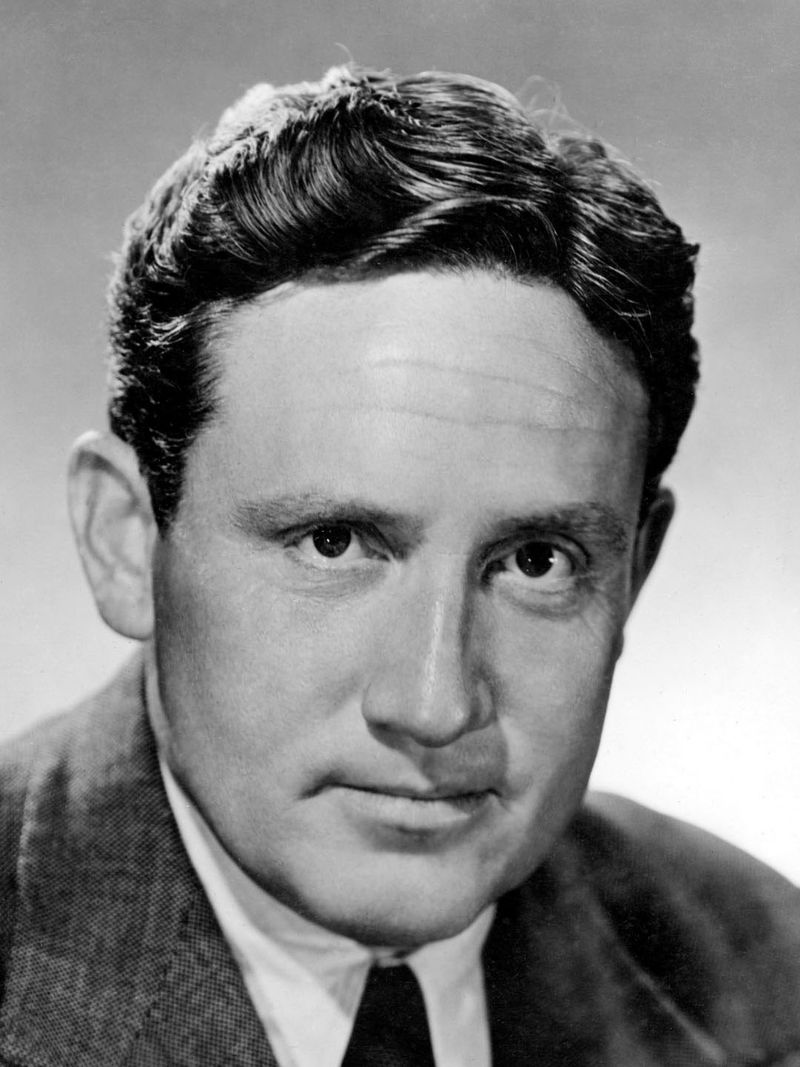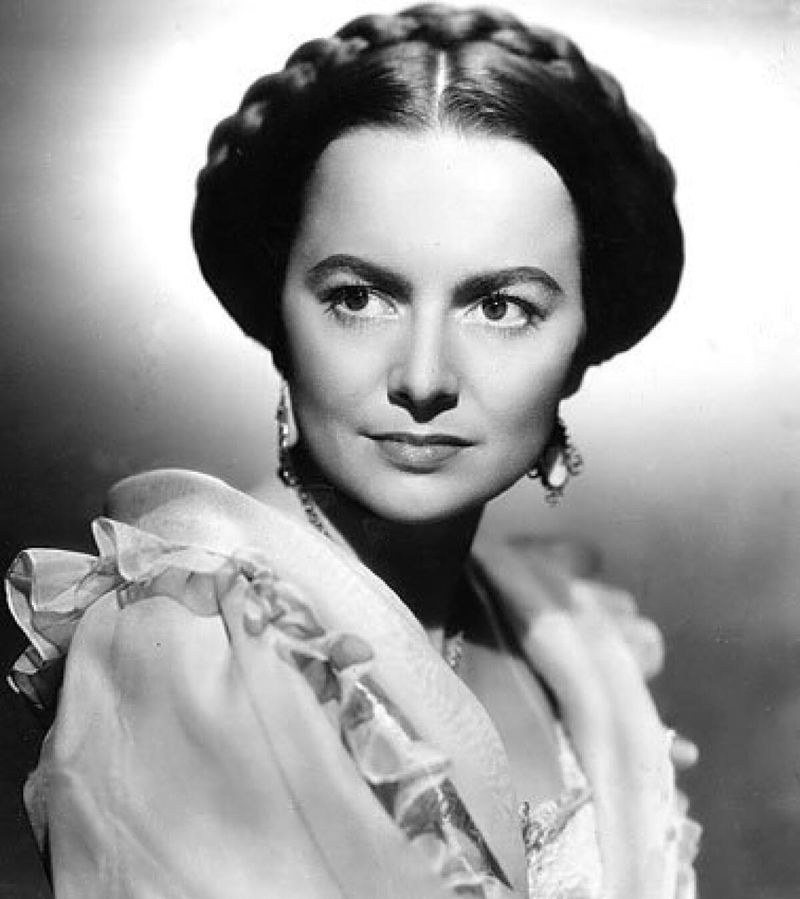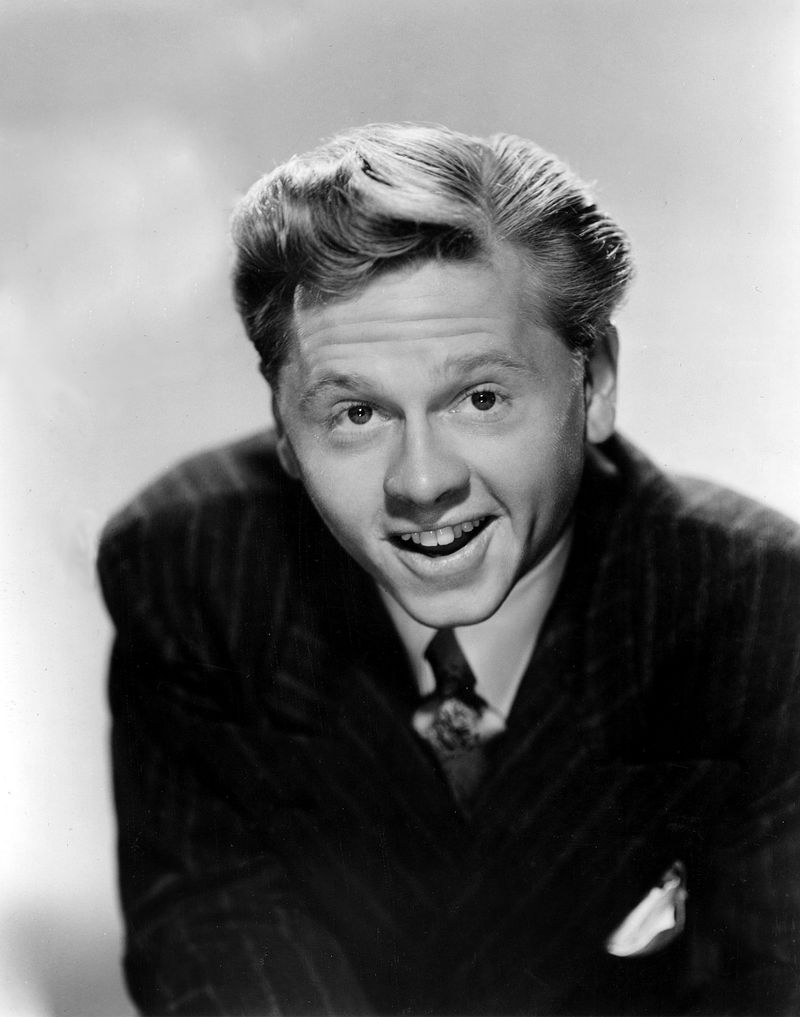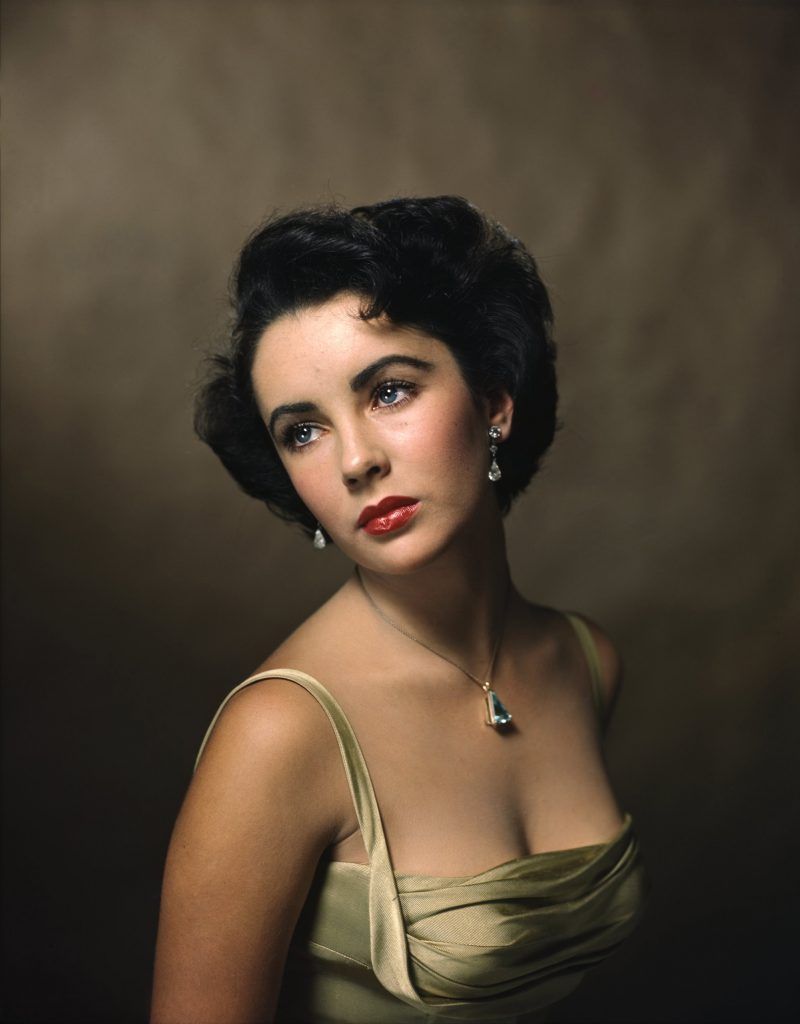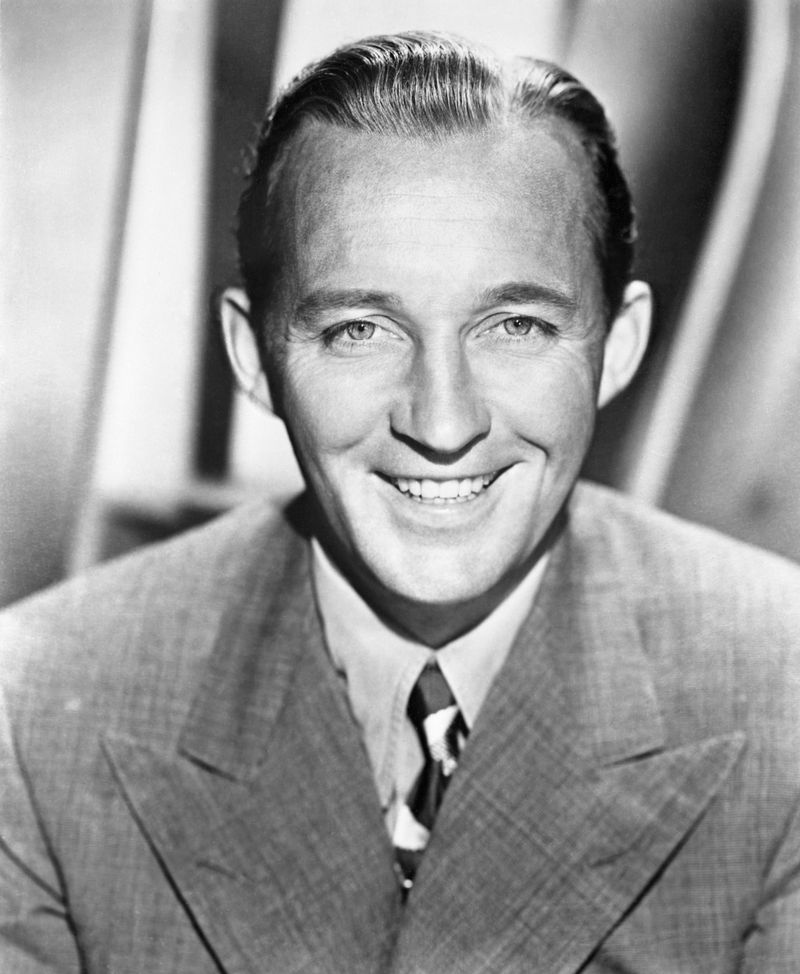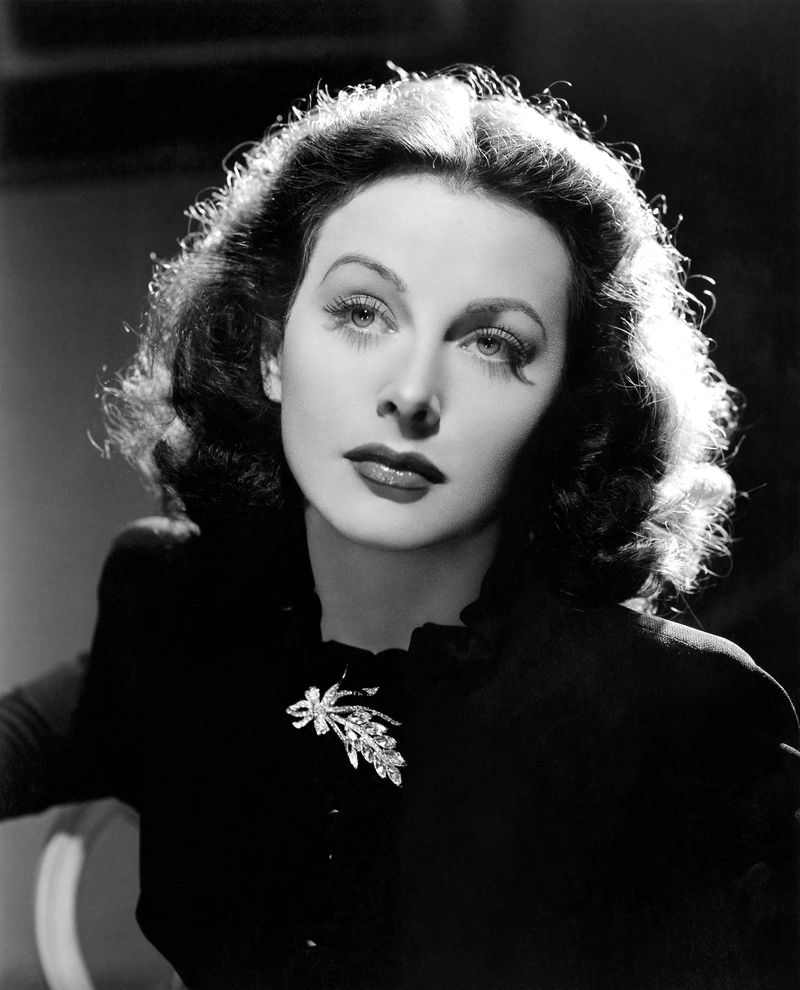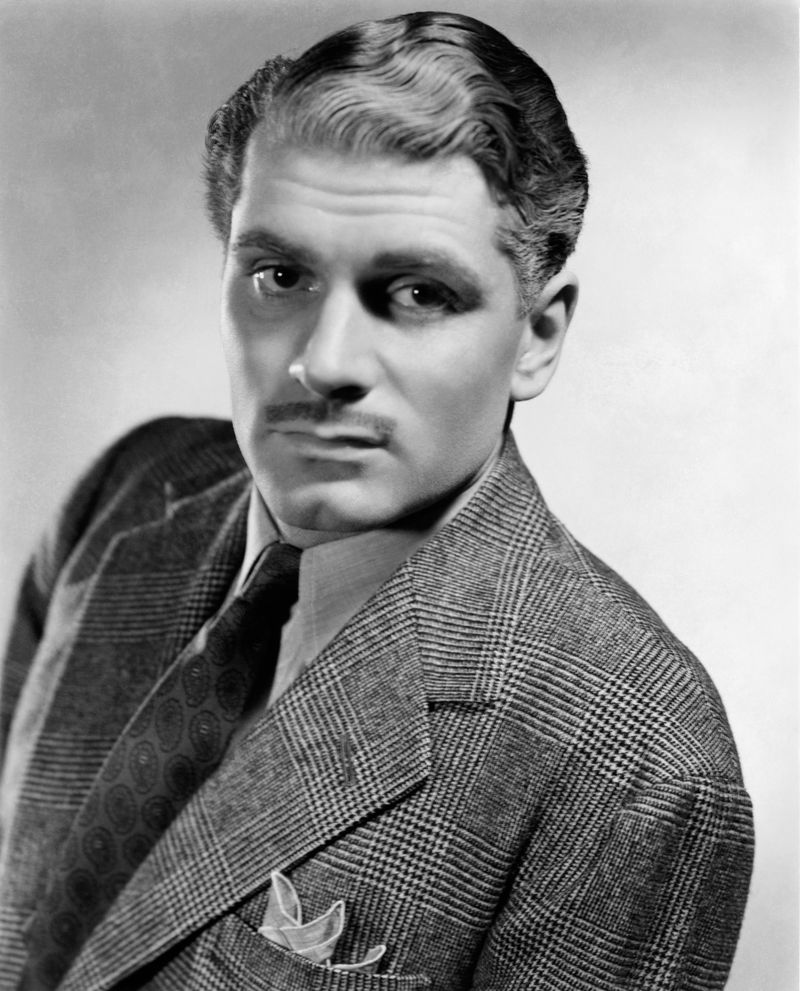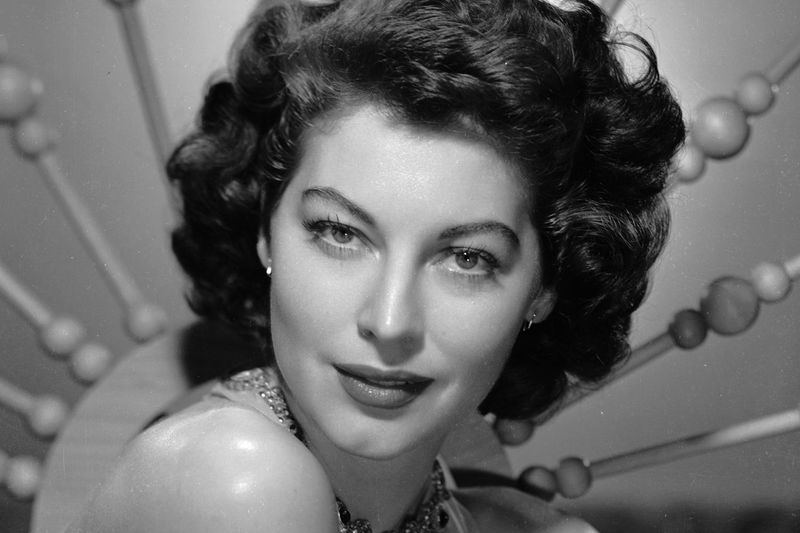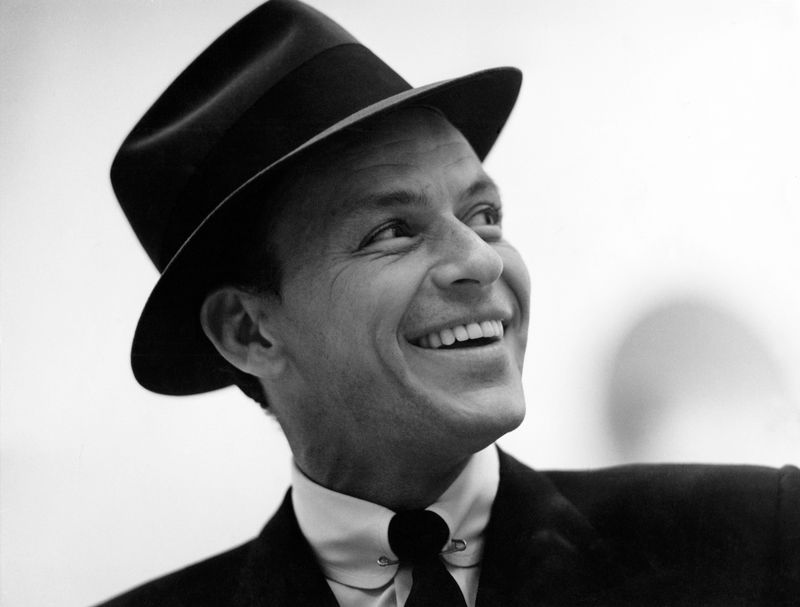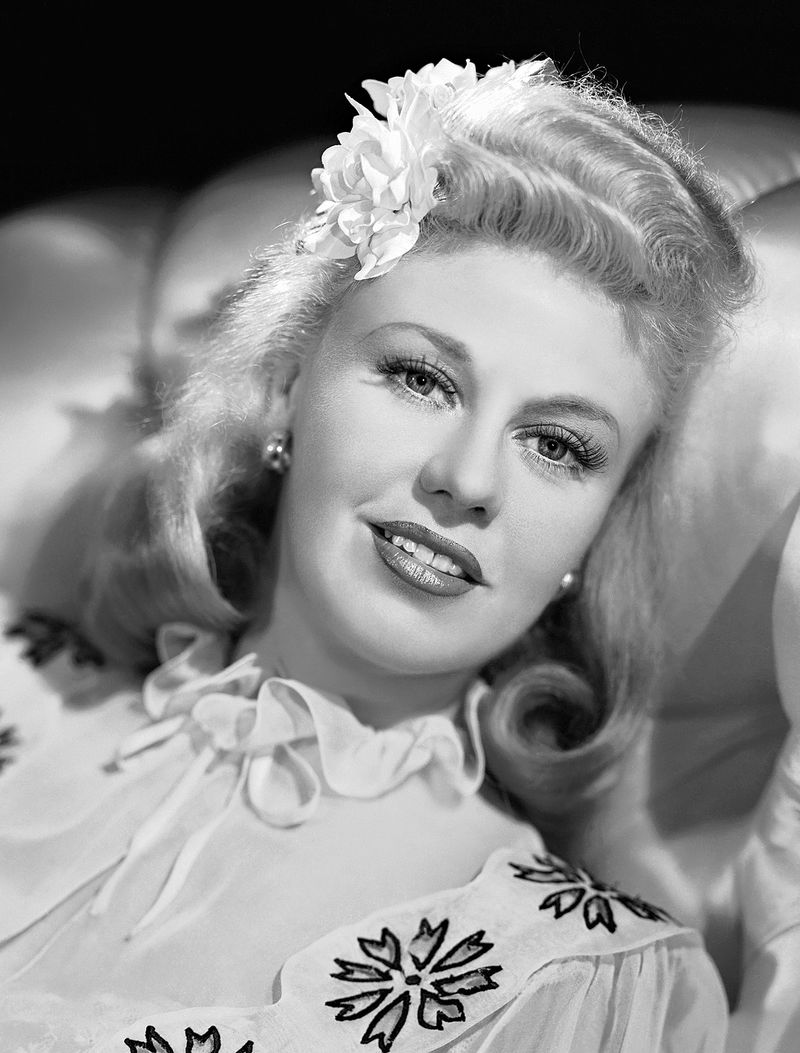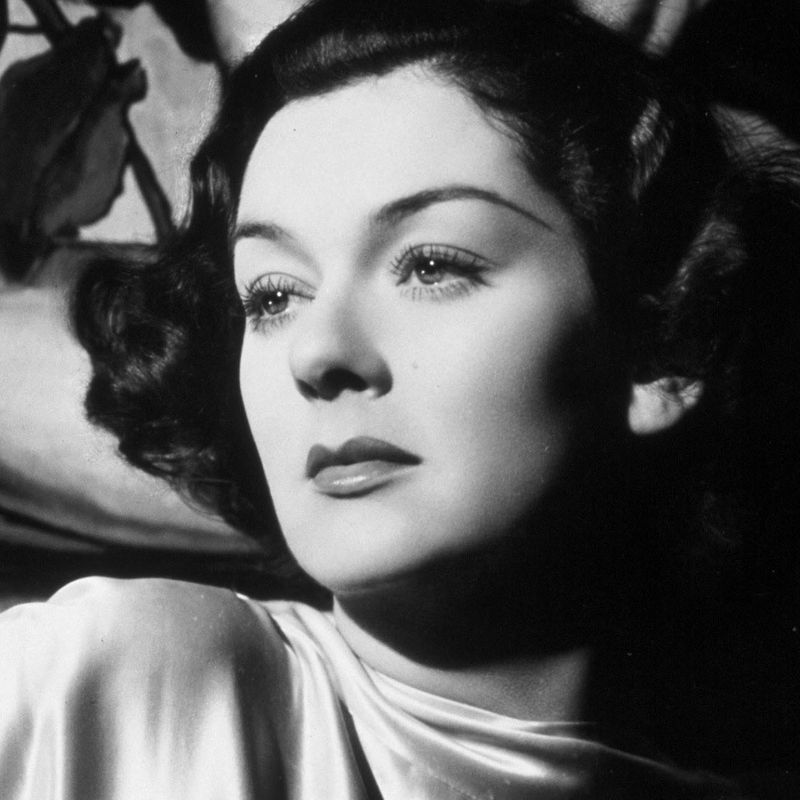The 1940s was a vibrant decade marked by the resilience of people around the world amidst World War II. During this time, the entertainment industry produced iconic stars who became symbols of hope and glamour.
These celebrities, with their timeless appeal and unmatched talent, captivated audiences and left an indelible mark in the film, music, and fashion industries.
Let’s explore the lives and contributions of 35 such stars who defined an era and continue to inspire generations.
1. Ingrid Bergman
Ingrid Bergman, a Swedish actress, captivated audiences with her natural beauty and nuanced performances. She became a Hollywood icon in the 1940s, starring in classics like Casablanca and Notorious.
Her ability to convey deep emotions while maintaining a graceful presence on screen made her a beloved figure. Bergman’s career was marked by her commitment to roles that challenged her acting abilities.
Off-screen, she was known for her strong-willed personality and dedication to her craft. Bergman’s influence extended beyond filmmaking, impacting women’s roles in Hollywood during and after her time.
2. Humphrey Bogart
Humphrey Bogart, often seen as the archetypal leading man of the 1940s, starred in numerous classic films such as Casablanca and The Maltese Falcon.
His unique style and gruff yet charismatic persona made him a standout performer of his era. Bogart’s characters often embodied a complex mix of toughness and vulnerability.
Despite a rocky start in Hollywood, he became one of the most revered actors of his time. His lasting impact on the film industry is evident, as he continues to be celebrated as a quintessential figure in American cinema.
3. Lauren Bacall
Lauren Bacall burst onto the scene in the 1940s with her debut in To Have and Have Not. Her sultry voice and stunning looks made her an instant star.
Bacall’s on-screen chemistry with Humphrey Bogart was electric, leading to a famous partnership both professionally and personally. Her roles often depicted strong, independent women.
Beyond her acting prowess, Bacall became a fashion icon of her time. Her influence extended into various realms, inspiring young actresses to embrace their individuality and strength.
4. James Stewart
James Stewart, known for his everyman charm, became a defining presence in the 1940s film industry. His roles in films like It’s a Wonderful Life showcased his ability to embody relatable characters.
Stewart’s acting style was characterized by humility and sincerity, endearing him to audiences worldwide. His career spanned decades, and he became one of the most versatile actors of his generation.
Off-screen, Stewart was admired for his integrity and dedication to his craft. His legacy endures as a symbol of classic American cinema.
5. Lana Turner
Lana Turner was known as the “Sweater Girl” and was one of the most sought-after actresses of the 1940s. Her glamorous image and dramatic roles captivated audiences.
Turner’s career was marked by a series of successful films that highlighted her versatility as an actress. She was adept at both dramatic and comedic roles, showcasing her diverse talent.
Her personal life often made headlines, adding to her allure. Despite the challenges she faced, Turner remained a beloved figure in Hollywood, known for her resilience and charm.
6. Cary Grant
Cary Grant, a quintessential leading man, was renowned for his sophisticated style and charismatic screen presence. Films like His Girl Friday and Notorious highlighted his impeccable comedic timing and dramatic talent.
Grant’s ability to transition between genres made him a versatile and beloved star. His charm and elegance set a standard for actors of his generation.
Off-screen, he was known for his wit and sense of humor. Grant’s influence continues to be felt in the industry, as he remains a timeless icon of Hollywood’s Golden Age.
7. Rita Hayworth
Rita Hayworth was dubbed the “Love Goddess” of the 1940s, captivating audiences with her dancing talent and alluring beauty. Films like Gilda cemented her status as a Hollywood legend.
Hayworth’s iconic roles often featured her as a femme fatale, showcasing her ability to portray complex female characters. Her dance sequences left lasting impressions on viewers.
Beyond her film career, Hayworth became a symbol of glamour and elegance. Her impact extended beyond entertainment, influencing fashion and beauty standards of the era.
8. Katherine Hepburn
Katherine Hepburn, with her distinct voice and commanding presence, redefined femininity in Hollywood during the 1940s. Her performances in films like The Philadelphia Story showcased her sharp wit and intelligence.
Hepburn was known for her independent spirit both on and off the screen. She often chose roles that challenged societal norms and highlighted strong, complex women.
Her influence paved the way for future generations of actresses. Hepburn’s legacy continues to inspire, as she remains a symbol of strength and individuality in cinema.
9. Clark Gable
Clark Gable, known as “The King of Hollywood,” was a dominant figure in the 1940s film scene. His rugged masculinity and charm made him a staple in popular films of the era.
Gable’s role in Gone with the Wind solidified his status as a leading man. He possessed an undeniable screen presence that captivated audiences worldwide.
Off-screen, Gable was respected for his dedication to his craft and his service in World War II. His contributions to film and his heroic persona have made him an enduring icon.
10. Betty Grable
Betty Grable, famously known for her “million-dollar legs,” was a top box-office draw in the 1940s. Her roles in musical comedies brought joy to audiences during challenging times.
Grable’s iconic pin-up photos became emblematic of the era, symbolizing hope and beauty. Her talent extended beyond acting to singing and dancing, showcasing her versatility.
Beyond the screen, Grable was known for her approachable and down-to-earth personality. Her impact on popular culture and fashion during the 1940s remains significant.
11. Judy Garland
Judy Garland, a powerhouse performer, enchanted audiences with her remarkable voice and emotive acting. Her role in The Wizard of Oz made her an enduring star.
In the 1940s, Garland continued to shine in musicals, captivating fans with her energetic performances and heartfelt singing. Her ability to connect with audiences was unparalleled.
Despite personal struggles, Garland’s resilience and talent left a lasting legacy. She remains an iconic figure in entertainment, inspiring singers and actresses with her work.
12. Fred Astaire
Fred Astaire, a legendary dancer and actor, dazzled audiences with his innovative choreography and effortless style. Known for his grace, Astaire’s films in the 1940s were cinematic masterpieces.
His partnerships with leading ladies like Ginger Rogers created some of the most memorable dance sequences in film history. Astaire’s precision and creativity set him apart.
His influence on dance and film is profound, inspiring generations of performers. Astaire’s legacy endures as a symbol of elegance and innovation in the entertainment industry.
13. Gene Tierney
Gene Tierney, with her stunning beauty and dramatic talent, became one of the most celebrated actresses of the 1940s. Her role in Laura remains iconic.
Tierney’s performances featured a depth and complexity that captivated audiences. Her ability to portray nuanced characters made her a standout.
Off-screen, Tierney faced personal challenges with grace and resilience. She left a lasting impact on film, influencing the portrayal of psychological depth in female characters.
14. Henry Fonda
Henry Fonda, known for his compelling portrayals of earnest, morally upright characters, became a staple of 1940s cinema. His performances in films like The Grapes of Wrath reflected his ability to connect deeply with audiences.
Fonda’s acting style was marked by authenticity and vulnerability, making his characters relatable. He often tackled socially relevant themes, adding depth to his roles.
His career spanned decades, earning him respect and admiration. Fonda’s dedication to his craft and impact on American cinema continue to be celebrated.
15. Vivien Leigh
Vivien Leigh, renowned for her role as Scarlett O’Hara in Gone with the Wind, continued to captivate audiences in the 1940s with her intense performances.
Leigh’s exquisite beauty and dramatic talent made her a distinctive presence on screen. Her ability to convey complex emotions added depth to her roles.
Despite personal struggles, Leigh maintained an impressive career, leaving an indelible mark on the film industry. Her performances remain cherished, inspiring countless actresses.
16. Marlene Dietrich
Marlene Dietrich, with her sultry voice and magnetic presence, was a defining figure of 1940s cinema. Her performances in films like Morocco and The Blue Angel showcased her enigmatic allure.
Dietrich’s style, often characterized by androgynous fashion choices, broke barriers and challenged norms. She became a symbol of elegance and rebellion.
Beyond her film career, Dietrich was known for her humanitarian efforts during World War II. Her legacy as a pioneering entertainer and style icon endures.
17. Orson Welles
Orson Welles, a visionary filmmaker and actor, revolutionized cinema with his innovative storytelling techniques. His film Citizen Kane remains a landmark in film history.
Welles’ artistic genius extended beyond his directorial work, as he also delivered captivating performances on screen. His ability to blend creativity with technical skill set new standards.
Despite facing challenges in Hollywood, Welles’ contributions to cinema are revered. He remains an enduring figure, inspiring filmmakers with his groundbreaking work.
18. Bette Davis
Bette Davis, a trailblazing actress, was known for her intense performances and commanding presence. Her roles in films like All About Eve showcased her ability to portray complex characters.
Davis’ career was defined by her determination to take on challenging roles that pushed boundaries. She became an advocate for women’s rights in Hollywood.
Her influence extends beyond her filmography, as she paved the way for future generations of actresses. Davis’ legacy is celebrated for her contributions to cinema and her fierce independence.
19. Errol Flynn
Errol Flynn, synonymous with adventure and charm, was a leading figure in action films of the 1940s. His portrayal of heroic characters like Robin Hood captivated audiences.
Flynn’s dynamic performances were complemented by his charismatic persona, making him a beloved star. He embodied the spirit of adventure and excitement.
While his personal life often made headlines, Flynn’s contributions to cinema as a swashbuckling hero remain iconic. His legacy as a charismatic leading man endures in film history.
20. Joan Crawford
Joan Crawford, with her striking looks and dramatic talent, was a formidable presence in 1940s cinema. Her performances in films like Mildred Pierce earned her critical acclaim.
Crawford’s career spanned over five decades, showcasing her ability to adapt to changing trends in film. She was known for her fierce determination and work ethic.
Beyond her screen roles, Crawford’s influence on fashion and style was significant. She remains a symbol of classic Hollywood glamour and resilience.
21. Gregory Peck
Gregory Peck, celebrated for his noble and dignified screen presence, was a leading man of the 1940s. His performances in films like To Kill a Mockingbird showcased his versatility.
Peck’s roles often featured him as a principled hero, embodying integrity and strength. His ability to convey deep emotion made him a beloved actor.
Off-screen, Peck was known for his activism and commitment to social causes. His legacy as a respected actor and humanitarian continues to inspire.
22. Barbara Stanwyck
Barbara Stanwyck, known for her versatility and powerful performances, was a leading actress of the 1940s. Her roles in films like Double Indemnity demonstrated her ability to captivate audiences.
Stanwyck’s career was marked by a range of characters, from femme fatales to strong, independent women. Her dedication to her craft earned her respect and admiration.
Beyond her acting, Stanwyck was known for her professionalism and resilience. Her influence on film noir and dramatic storytelling remains significant.
23. Spencer Tracy
Spencer Tracy, a two-time Academy Award winner, was renowned for his naturalistic acting style. His performances in films like Guess Who’s Coming to Dinner remain iconic.
Tracy’s ability to portray complex, relatable characters made him a beloved figure in Hollywood. He was known for his humility and dedication to his roles.
His partnership with Katharine Hepburn resulted in some of cinema’s most cherished films. Tracy’s legacy continues to inspire actors with his profound impact on storytelling.
24. Olivia de Havilland
Olivia de Havilland, renowned for her grace and poise, was a leading actress of the 1940s. Her performances in films like Gone with the Wind earned her critical acclaim.
De Havilland’s ability to portray complex emotions made her a standout performer. She was known for her legal battle against studio contracts, changing Hollywood forever.
Her legacy extends beyond her roles, as she paved the way for actors in the industry. De Havilland’s contributions to cinema and advocacy for artists’ rights remain significant.
25. Mickey Rooney
Mickey Rooney, a versatile actor and entertainer, charmed audiences with his energetic performances. His roles in musicals and comedies made him a beloved figure of the 1940s.
Rooney’s talent extended across various genres, showcasing his adaptability and charisma. His partnership with Judy Garland was particularly celebrated.
Despite personal setbacks, Rooney maintained a prolific career, becoming one of the longest-serving actors in Hollywood. His legacy is celebrated for his dynamic contributions to film and entertainment.
26. Elizabeth Taylor
Elizabeth Taylor, with her striking beauty and talent, emerged as a promising star in the late 1940s. Her role in National Velvet brought her critical acclaim.
Taylor’s captivating presence and acting ability set her apart from her peers. She quickly became a symbol of elegance and sophistication.
Her career spanned several decades, during which she earned numerous accolades. Taylor’s influence on fashion and film remains significant, cementing her legacy as a Hollywood icon.
27. Bing Crosby
Bing Crosby, a legendary singer and actor, became one of the most popular entertainers of the 1940s. His smooth voice and charming persona captivated audiences.
Crosby’s role in films like Holiday Inn showcased his versatility and talent. He was a pioneer in the music industry, influencing generations of artists.
Beyond his entertainment contributions, Crosby was known for his philanthropic efforts. His legacy as a beloved figure in music and film continues to resonate.
28. Hedy Lamarr
Hedy Lamarr, celebrated for her beauty and intelligence, was a prominent actress of the 1940s. Her roles in films like Samson and Delilah showcased her talent.
Beyond acting, Lamarr was an inventor, co-developing a frequency-hopping technology crucial for modern wireless communications. Her contributions to science are as noteworthy as her film career.
Lamarr’s influence extends beyond entertainment, as she remains a symbol of innovation and beauty. Her legacy continues to inspire both in Hollywood and the tech industry.
29. Laurence Olivier
Laurence Olivier, a distinguished actor and director, was a towering figure in the 1940s film and theatre scenes. His performances in Shakespearean adaptations were particularly acclaimed.
Olivier’s commitment to his craft and ability to portray a wide range of characters made him a revered figure. His influence on theatre and film is profound.
Off-stage, Olivier was known for his dedication to the arts and mentorship of young actors. His legacy endures as a symbol of excellence in performance.
30. Ava Gardner
Ava Gardner, renowned for her beauty and talent, became a leading actress of the 1940s. Her roles in films like The Killers established her as a star.
Gardner’s ability to portray passionate, strong-willed characters captivated audiences. Her personal allure added to her mystique and celebrity status.
Despite facing challenges in her personal life, Gardner’s impact on film and fashion is well-remembered. She remains an emblem of glamour and resilience in Hollywood.
31. Frank Sinatra
Frank Sinatra, a legendary singer and actor, captured the hearts of audiences in the 1940s with his smooth voice and charismatic performances.
Sinatra’s music and film roles showcased his versatility and ability to connect with audiences. He became a cultural icon, influencing the entertainment industry significantly.
Beyond his artistic achievements, Sinatra was known for his generosity and support for civil rights. His legacy as a pioneering entertainer continues to inspire artists worldwide.
32. Ginger Rogers
Ginger Rogers, an accomplished actress and dancer, was a prominent figure in 1940s cinema. Her collaborations with Fred Astaire resulted in some of the most memorable dance sequences in film history.
Rogers’ charm and talent extended beyond dance to dramatic roles, showcasing her versatility. She became a beloved star both on and off the screen.
Her influence on dance and film is celebrated, as she paved the way for future performers. Rogers’ legacy as a trailblazer in entertainment endures.
33. Lena Horne
Lena Horne, a pioneering singer and actress, broke racial barriers in the 1940s entertainment industry. Her performances in films and on stage captivated audiences.
Horne’s sultry voice and charismatic presence made her a standout performer. She used her platform to advocate for civil rights and equality.
Her influence extended beyond entertainment, inspiring generations with her talent and activism. Horne’s legacy as a trailblazer and advocate for social justice continues to resonate.
34. Robert Mitchum
Robert Mitchum, known for his brooding persona and deep voice, became a prominent figure in 1940s film noir. His performances in films like Out of the Past showcased his unique style.
Mitchum’s ability to portray complex, morally ambiguous characters set him apart. He became a symbol of the anti-hero archetype in cinema.
Beyond his film roles, Mitchum was known for his authenticity and laid-back demeanor. His legacy as a defining figure in film noir endures.
35. Rosalind Russell
Rosalind Russell, renowned for her comedic timing and dramatic talent, was a leading actress of the 1940s. Her roles in films like His Girl Friday highlighted her wit and charm.
Russell’s ability to tackle diverse genres made her a versatile performer. She was known for portraying strong, independent women, inspiring audiences.
Her influence on gender representation in cinema is significant. Russell’s legacy as a trailblazer in film and comedy continues to inspire new generations.
